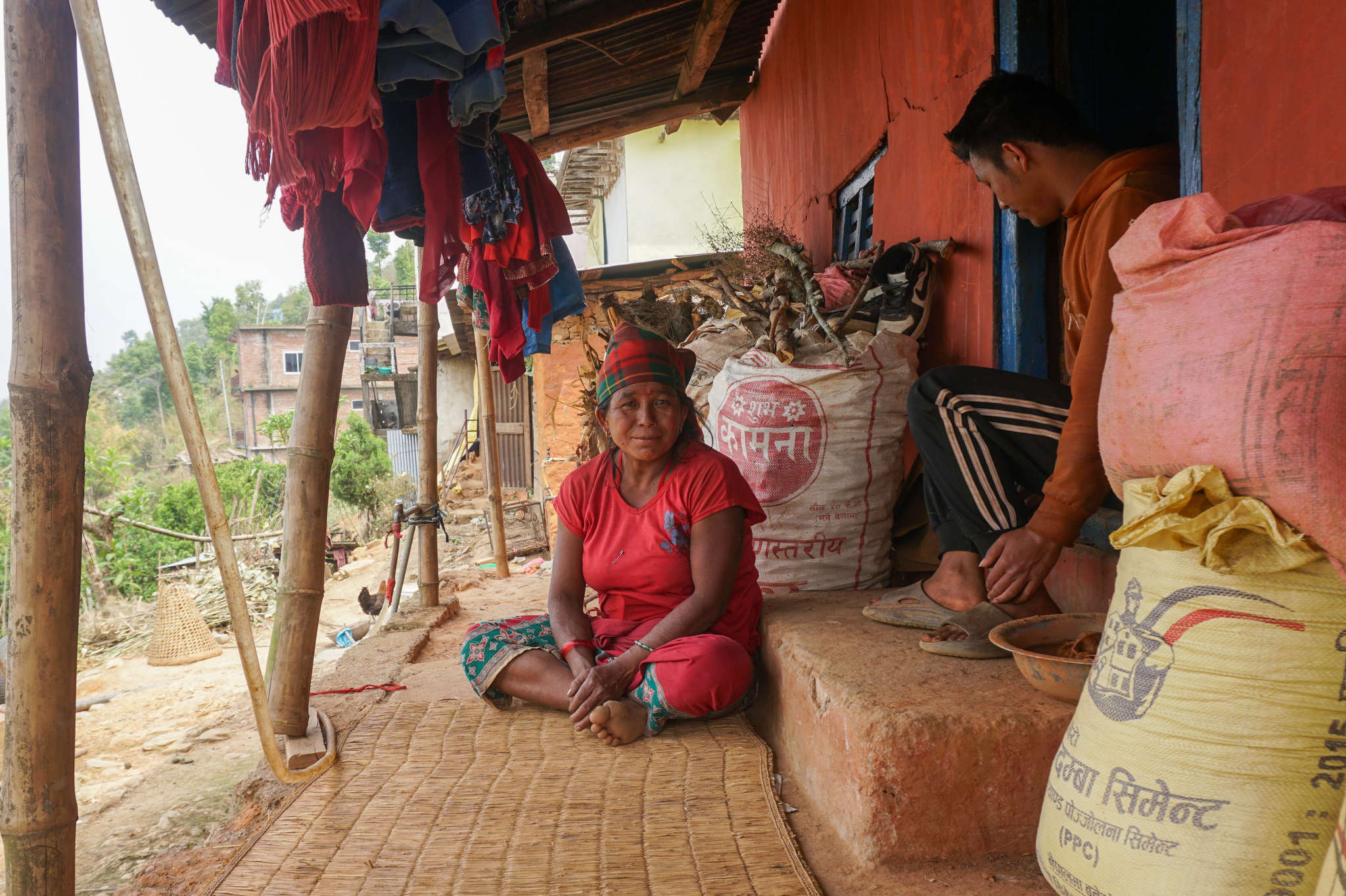Nepal’s Farmers Struggle Amid Aid Cuts

Sunita Kumaru Neupane/Yam Kumari Kandel
PALPA DISTRICT, NEPAL — In the quiet of the morning, Kanta Rajali carefully places two bowls of rice on the stove. She knows they will not be enough to satisfy her family of four. But she has to save two more bowls of rice for dinner, when she again will face the challenge of feeding her sick husband, her disabled older son and her sick younger son.
“I have learned to live on half a stomach full so that my husband and children can feel full,” says Rajali, 50.
Tomorrow, the same struggle will repeat itself. Since her marriage at age 15, Rajali has cultivated crops including maize, mustard, barley and potatoes to help her family survive. However, due to changes in seasonal patterns, yields have decreased and the harvest only lasts about four months. The barley supply used to make flour for a year. Now, it is limited to two handfuls.
The struggle by farmers like Rajali to produce enough food in a country coping with poverty, malnutrition and what research shows are hurdles linked to climate change grew more intense recently with the loss of funding through the United States Agency for International Development. In response to a Global Press Journal public records request, Nepal’s Ministry of Agriculture and Livestock Development said that six USAID programs slated to provide a total of between approximately US$104 million and US$114 million were cut off. Most of the programs began in 2023 and the bulk of the funding was scheduled to continue until 2028 or 2029.
Ministry officials said Nepal’s government was involved in administering one program worth US$21 million — with nongovernmental organizations implementing others — and couldn’t say how much money was disbursed overall before the aid stopped. Officials added that Nepal’s government hasn’t been paid back 11.2 million Nepali rupees (about US$81,150) it already spent on that particular program while expecting USAID reimbursement. The US State Department didn’t provide details when Global Press Journal asked for specifics about the funding cuts.
Earlier this year, the administration of US President Donald Trump abruptly placed roughly 90% of USAID staff on administrative leave, according to court records that show 86% of its programs were terminated. The administration closed the headquarters of the agency created in 1961 as the US government’s international humanitarian and development arm. On May 29, the US State Department notified Congress of its plans to narrow the focus of USAID and to absorb some of its functions. The legality of the Trump administration’s actions to dismantle the Congressionally-mandated agency is being challenged in a US court. Meanwhile, the impacts are being felt globally.

Key programs halted
In Nepal, the cuts halted key support programs such as initiatives to improve access to seeds, fertilizers, agricultural tools and sustainable agricultural resources. The programs had focused on increasing agricultural productivity, strengthening market systems, and boosting nutrition, especially for smallholder farmers facing climate and economic challenges. A key aim had been to transition growers from subsistence farming to commercial agriculture. With the disappearance of the programs, farmers fear they will be pushed deeper into poverty.
In Rajali’s household, she is the sole breadwinner. Her husband, 60, has been ill from a relapse of tuberculosis. Their older son, 27, is unable to speak due to mental health challenges. Their younger son, 23, experiences fainting spells. To support her family, Rajali also works in the village as a laborer, struggling to provide the most basic nutrition for her loved ones as they survive on 500 rupees (about US$3.64) a day. But she says laborer work isn’t always available.
Agriculture makes up nearly a quarter of Nepal’s economy and employs 66% of all workers — most of them women, according to the United Nations World Food Programme. While smallholder farmers like Rajali grow up to 80% of the country’s food, low yields have led to a 65% rise in food imports since 2015 and many rural families can’t feed themselves year-round. Yet the government allocates just 3% of its budget to the agriculture sector, findings from Democracy Resource Center Nepal indicate. The Nepal Living Standards Survey from 2022 to 2023 shows while there was a significant reduction in poverty over 12 years, 20.3% of the population lives below a new poverty line established with a higher standard.
Meeting Nepal’s poverty reduction goals in the coming years will be challenging because of the loss of USAID funding, says Ram Krishna Shrestha, a joint secretary within Nepal’s Ministry of Agriculture and Livestock Development.

“These programs have strengthened the capacity of farmers. They have been able to earn a living, produce independently and manage markets,” he says, describing how some farmers not only fed their families, but improved their livelihoods.
Malnutrition will increase and farmers will become poorer as a result of the funding loss, Shrestha says.
Keshav Devkota, head of the Centre for Crop Development and Agricultural Bio-diversity Conservation, part of Nepal’s agriculture ministry, says the center no longer will be able to promote indigenous seed varieties that were developed to be climate-resistant and aimed at reducing malnutrition.
Rukmangat Bhattarai, chairman of Rainadevi Chhahara, the rural municipality where Rajali’s family lives, says knowing USAID funding no longer will be available has officials concerned and considering what steps to take next. In part, the aid had helped farmers who grow oranges, including with support when it came to bringing the produce to market.
“When farmers started struggling to adapt to changing seasonal patterns, we started this program to transform agriculture into a commercial practice. But now, many farmers are frustrated,” he says.

The weight of crop troubles
In 2018, Rajali replaced her main crop with orange trees because she was unable to support her family by growing food that is more traditional in the region. She hoped oranges would provide a stable living, and planted more of the trees when her first crop yielded an income of 20,000 rupees (about US$145.50).
But as drought conditions worsened, the orange blossoms fell prematurely, the trees wilted, mold spread, and hail and insects further damaged the fruit. Now Rajali’s orange production is no longer a reliable source of income.
On top of that, only scattered sprouts emerged after she planted maize between the orange trees. Watering this sparse crop is also a challenge since the tap water in her family’s home comes on only for half an hour each day. When there isn’t enough water, she goes to a well an hour away to get more.
Like many farmers in Nepal, Rajali relies primarily on rain for irrigation. But rainfall has been inadequate the past 11 winters. Because her farming hasn’t produced enough to support her family, she feels her fate is cursed and there is no escape from a life of misery.
“It’s like a never-ending cycle,” Rajali says.
She adds that the loss of USAID funding means she will no longer receive subsidies from the rural municipality that provided her with orange seedlings, fertilizer and agricultural tools, along with help arranging local market access to sell her oranges. As the wife and mother ages, she says she feels the weight of time pressing on her while she labors to feed her family. But the need to provide for them keeps her going.
“I will not rest until I can feed my family,” Rajali says, “even if it means taking my last breath.”
Global Press Journal


















